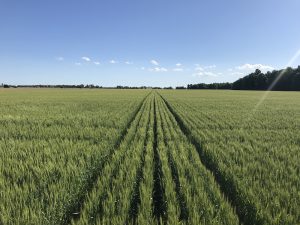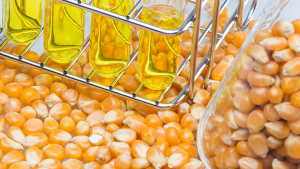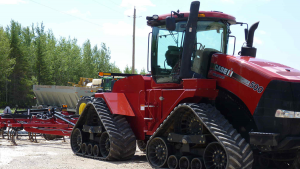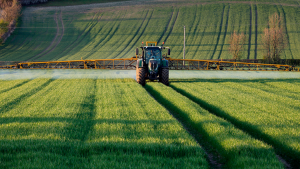4Rs in Ontario
THE PAST, THE PRESENT, THE FUTURE
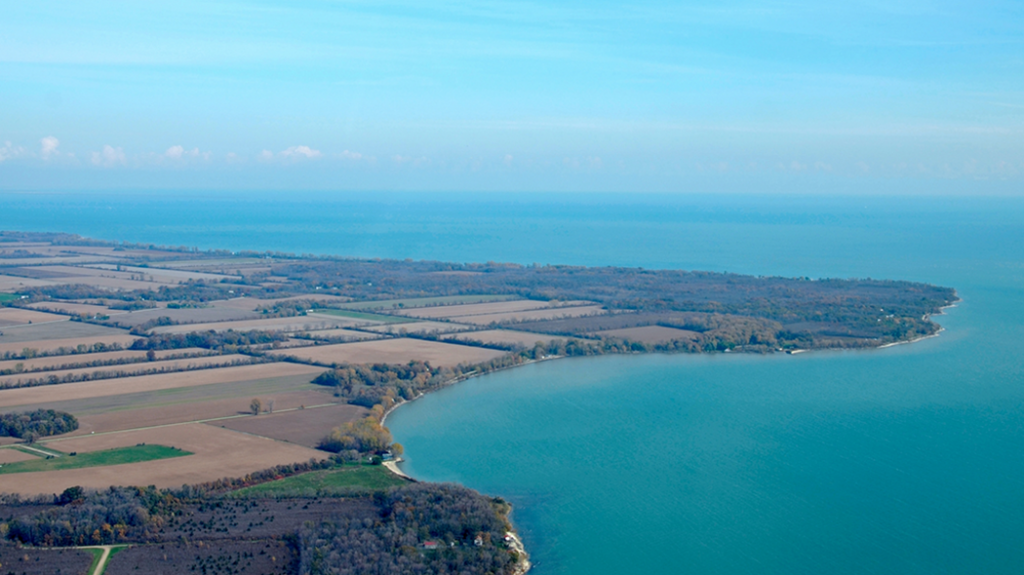
THE UNITED NATIONS’ (UN) Sustainable Development Goals have identified clean water and sanitation as one of their 17 goals to ensure availability and sustainable management of water and sanitation. Clean water is a top priority in Canada, with many international, national, and provincial agreements in place to protect our water resources. The Great Lakes Basin is home to the largest freshwater supply in the world and not only supplies drinking water, but also provides recreational uses such as cottaging, swimming, boating, and fishing. Water quality impacts can be felt when drinking water is impacted and canceled daily outings to the local beach due to algae blooms.
4R ONTARIO
In response to some of these water quality concerns, the Ontario agriculture industry made a voluntary, industry-led commitment with a goal to work towards the long-term improvement of water quality of the Great Lakes and Ontario’s rivers, streams, and lakes. In 2018, a three-year Memorandum of Cooperation (MOC) was signed with Fertilizer Canada, the Ontario Ministry of Agriculture, Food and Rural Affairs (OMAFRA), Ontario Agri-Business Association (OABA), Ontario Federation of Agriculture (OFA), Christian Farmers Federation of Ontario (CFFO), and Grain Farmers of Ontario to implement Fertilizer Canada’s voluntary nutrient stewardship initiative in Ontario, known as 4R Nutrient Stewardship.
4R Ontario Steering Committee was assembled to work towards achieving the goals and deliverables of the agreement. This is made up of a diverse group of stakeholders including the signatories (OMAFRA, Fertilizer Canada, OABA, OFA, CFFO, Grain Farmers of Ontario) and Conservation Ontario; The Nature Conservancy — Ohio; the Ministry of the Environment and Climate Change; Plant Nutrition Canada; the Ontario Certified Crop Advisor Board; and Ontario agri-retailers.
Through 4R Ontario, Steering Committee members have agreed that 4R Nutrient Stewardship is an effective, science-based, voluntary approach to improving nutrient management and improving water quality outcomes and have committed to the continued implementation of 4R Nutrient Stewardship in Ontario.
4R CERTIFICATION
One of the main outcomes has been the development of the 4R Ontario Certification program. This program was launched in 2018 and follows a standard based on the best available science, technology, and regulatory requirements for Ontario conditions. The standard follows 37 auditable criteria that an agri-retailer must follow to become a ‘4R Certified Retailer.’ While farmers aren’t certified as part of the program, they are vital to its success. The ‘4R Certified Retailer’ staff will work directly with farmers to develop a custom crop nutrient plan to fit each farm’s unique climatic, soil, cropping, and operational conditions. The plan includes following best management practices (BMPs) including conducting soil tests at least once every four years and identifying the location of sensitive features (such as a creek or well-head) before applying nutrients.
Since the program’s inception, significant achievements have been made in certifying retailers and gaining support from farmers. Today, 2,451 farmers are participating in the 4R Certification Program with their agri-retailer, covering just under one million acres across the province, and 28 full-service agri-retail locations have completed full certification in Ontario.
THE NEXT MOC
Earlier this year, the 4R MOC agreement was renewed with the existing signatories (OMAFRA, Fertilizer Canada, OABA, OFA, CFFO, Grain Farmers of Ontario) to carry the momentum forward over another three years. The core of the renewed agreement remains the same — the 4R Ontario will continue to work towards improving nutrient use efficiency on Ontario’s cropland by maintaining productivity while remaining committed to protecting our environment.
While improving the nutrient use efficiency of all crop nutrients falls within 4R Ontario, additional emphasis will be placed on nitrogen (N). Canada has committed to reducing greenhouse gas (GHG) emissions and Agriculture and Agri-Food Canada (AAFC) is examining a voluntary commitment to reduce nitrous oxide (N2O) emissions from nitrogen fertilizer applications by 30 per cent. With these known targets, there is an opportunity for the 4Rs, as a science-based practice for reduced nutrient loss, along with GHG emission reductions to help meet broader goals.
This agreement also will be looking to set short-term targets for the 4Rs in Ontario which could include goals for acres, farmers, and agri-retailers participating in the program by 2025. A large focus will be on communication and outreach, both to the farmer and the agri-retailer to further scale the program. The 4Rs are constantly evolving, just like the agreement with our partners — it is about improving and adapting to a changing environment.
The 4Rs in Ontario is about using the best information and science to make informed decisions on what you are applying, when you are applying, and how much you are applying to optimize nutrient use efficiency. The 4Rs is as much about minimizing impact to the environment as it is about maximizing profitability and when those two things happen, everyone wins.
Michael Buttenham is the environment and sustainability lead at Grain Farmers of Ontario. •























